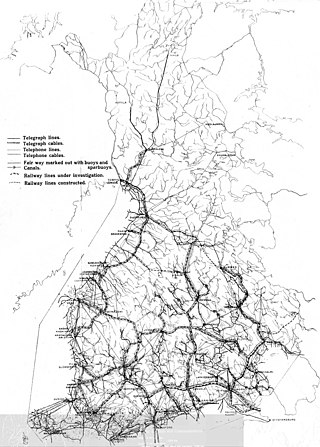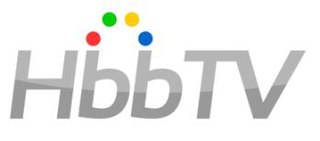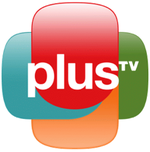
Telecommunications in Finland, as indicated by a 2022 European Commission index, highlight the country's significant role in the EU's digital sector. Finland has a high concentration of Information and Communication Technology (ICT) specialists and robust training programs, leading to notable expertise in technologies like AI and cloud computing. The nation has also made significant advancements in 5G technology. Additionally, Finland stands out for its high adoption of digital public services. The Finnish digital sector benefits from both the technology industry's contributions and government policies aimed at enhancing digital infrastructure and cybersecurity.
Telecommunications in Ireland operate in a regulated competitive market that provides customers with a wide array of advanced digital services. This article explores Ireland's telecommunications infrastructure including: fixed and mobile networks, The voice, data and Internet services, cable television, developments in next-generation networks and broadcast networks for radio and television.

A set-top box (STB), also known as a cable box, receiver, or simply box, and historically television decoder or a converter, is an information appliance device that generally contains a TV tuner input and displays output to a television set, turning the source signal into content in a form that can then be displayed on the television screen or other display device. It is designed to be placed alongside or "on top" of a television set.
In telecommunications, a customer-premises equipment or customer-provided equipment (CPE) is any terminal and associated equipment located at a subscriber's premises and connected with a carrier's telecommunication circuit at the demarcation point ("demarc"). The demarc is a point established in a building or complex to separate customer equipment from the equipment located in either the distribution infrastructure or central office of the communications service provider.

Digital Video Broadcasting (DVB) is a set of international open standards for digital television. DVB standards are maintained by the DVB Project, an international industry consortium, and are published by a Joint Technical Committee (JTC) of the European Telecommunications Standards Institute (ETSI), European Committee for Electrotechnical Standardization (CENELEC) and European Broadcasting Union (EBU).
Television in the Republic of Ireland is available through a variety of platforms. The digital terrestrial television service is known as Saorview and is the primary source of broadcast television since analogue transmissions ended on 24 October 2012. Digital satellite and digital cable are also widely used.

Television was introduced in Finland in 1955. Color television started in 1969 and was introduced gradually, with most programs in color by the late 1970s. All terrestrial analogue stations stopped broadcasting on 1 September 2007 after the introduction of digital television; cable providers were allowed to continue analog broadcasting in their networks until 1 March 2008.
Multimedia Home Platform (DVB-MHP) is an open middleware system standard designed by the DVB project for interactive digital television. The MHP enables the reception and execution of interactive, Java-based applications on a TV-set. Interactive TV applications can be delivered over the broadcast channel, together with audio and video streams. These applications can be for example information services, games, interactive voting, e-mail, SMS or shopping. MHP applications can use an additional return channel that has to support IP.
Digital terrestrial television is a technology for terrestrial television, in which television stations broadcast television content in a digital format. Digital terrestrial television is a major technological advancement over analog television, and has largely replaced analog television broadcasting, which was previously in common use since the middle of the 20th century.

Internet Protocol television (IPTV), also called TV over broadband, is the service delivery of television over Internet Protocol (IP) networks. Usually sold and run by a telecom provider, it consists of broadcast live television that is streamed over the Internet (multicast) — in contrast to delivery through traditional terrestrial, satellite, and cable transmission formats — as well as video on demand services for watching or replaying content (unicast).
Analogue television in the United Kingdom includes terrestrial, satellite and cable services that were broadcast using analogue television signals. Following the termination of Virgin Media's analogue cable television service in Milton Keynes in November 2013, all television in the United Kingdom is broadcast in digital only.
Freesat is a British free-to-air satellite television service, first formed as a joint venture between the BBC and ITV plc and now owned by Everyone TV. The service was formed as a memorandum in 2007 and has been marketed since 6 May 2008. Freesat offers a satellite alternative to the Freeview service on digital terrestrial television, with a broadly similar selection of channels available without subscription for users purchasing a receiver.
Television in France was introduced in 1931, when the first experimental broadcasts began. Colour television was introduced in October 1967 on La Deuxième Chaîne.
Interactive television standards are standards for television broadcasting that are designed to add modes of interaction and feedback mechanisms, thereby extending the traditional television experience.
Digital terrestrial television in the Philippines began in 2015 with the implementation of ISDB-T, currently coexisting with analog television that operates on the NTSC standard after the set analog switch-off (ASO) deadline encountered multiple postponements.

Hybrid Broadcast Broadband TV (HbbTV) is both an industry standard and promotional initiative for hybrid digital TV to harmonise the broadcast, Internet Protocol Television (IPTV), and broadband delivery of entertainment to the end consumer through connected TVs and set-top boxes. The HbbTV Association, comprising digital broadcasting and Internet industry companies, has established a standard for the delivery of broadcast TV and broadband TV to the home, through a single user interface, creating an open platform as an alternative to proprietary technologies. Products and services using the HbbTV standard can operate over different broadcasting technologies, such as satellite, cable, or terrestrial networks.

HD+ is a premium high-definition (HD) satellite and streamed TV service for German users, owned by HD PLUS GmbH, a subsidiary of SES based in Unterföhring near Munich, Germany.
Canal+ was a Spanish satellite broadcasting platform. It was previously known as Digital+ since its launch in 2003, and from 2011 it was known as Canal+, being named after its main premium channel.
Full Channel, Inc. was an American pay television and telecommunications provider set in Rhode Island. At the time of its acquisition by CountryWide Broadband it was the third-largest cable television and Internet service provider in the state. Its wired communications network was available to the approximately 50,000 residents of Bristol County, Rhode Island. Full Channel's main office was at 57 Everett Street in Warren, Rhode Island, U.S.
TV4 Media AB is a Swedish media holding company which is currently a part of the Swedish telecommunications company Telia Company, having acquired it from Swedish multimedia conglomerate Bonnier Group. The company owns Swedish commercial broadcaster TV4 AB, Finnish commercial broadcaster MTV Oy, and pan-Nordic premium television channel operator C More Entertainment.








